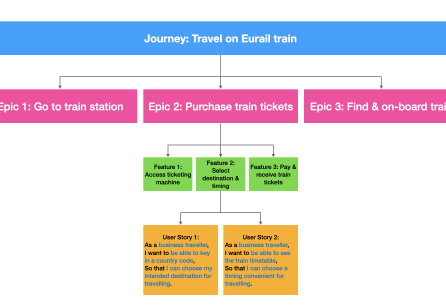Boundaries
Whenever we define a system by drawing boundaries around it, it's crucial to remember that this is a simplification. Defining the limits of the system often overlooks the myriad connections it has with its surroundings. Systems, by nature, are not isolated; they exist within a tapestry of other systems, creating a complex, nested hierarchy. This nesting means that each system, from a small internal process to a large organizational structure, is part of a greater whole.
This interconnectedness of services within a broader ecosystem means that actions in one area can ripple through others, creating a chain of influences. A change in one service can set new standards or expectations, alter the playing field for stakeholders, and even lead to competition for shared resources. These indirect influences are as crucial as direct ones.
Understanding the boundaries of a service, therefore, is more than identifying its immediate components. It's about recognizing its place within a network of other systems and considering the direct and indirect effects of any changes. Such an understanding is vital to address the right challenges effectively, ensuring that solutions are not just effective in isolation but also beneficial for the entire ecosystem. By acknowledging and mapping these intricate connections, we can design services that are not only efficient in their immediate context but also harmonious within the larger system they inhabit.
Purpose
Each system, much like organs in a human body, serves a distinct purpose within a larger network of systems. By definition, a system is an interconnected set of elements that is coherently organized in a way that achieves something. This purpose, or 'verb', is what defines the role of the system or service within its broader context. The purpose can range from delivering a specific output to fulfilling a broader function or adhering to a set of guiding principles.
Consider, for example, a public library system. Its primary function might seem straightforward — to lend books — but its deeper purpose extends to fostering community learning, preserving information, and providing access to technology and resources. Similarly, a weather forecast service does more than just report the temperature; it plays a critical role in agriculture planning, disaster preparedness, and influencing daily human activities.
Understanding the purpose of a system or service is not just about what the service does on the surface but also about its role in the larger system it is part of. This understanding helps in aligning the service with broader goals and in making strategic decisions that resonate with its core purpose. Clarity in purpose ensures that the service remains relevant and valuable within the dynamic ecosystem it operates in.
Value Exchange
Every system is composed of various elements: actors (the people involved), artifacts (the tools or objects used), and processes (the methods and procedures followed). These elements are intricately structured and interconnected, forming the backbone of the system. It's important to understand that these elements don't inherently possess strengths or weaknesses. Rather, they have distinct characteristics and attributes that can manifest as strengths or weaknesses depending on the context.
In any system, the elements engage in a dynamic web of value exchanges, which can be categorized broadly into three types: informational, material, and emotional. Understanding these exchanges provides insight into how each element influences and is influenced by others. It reveals the underlying motivations and interests, driving the dynamics within the system.
In complex systems, value judgments are inherently subjective and vary depending on the stakeholders' position and viewpoint. A balanced approach in service design necessitates a broad consideration of how value exchanges impact all participants in the system, not just the end-users. By acknowledging and designing for the diverse value exchanges that occur among all elements of the system, we can create more equitable, sustainable, and effective services that cater to the needs and well-being of the entire ecosystem.
Sustaining Principles
Sustaining principles are the foundational rules and guidelines that define the behavior and interactions of all elements within a system. These principles serve as a compass, guiding decision-making and actions, ensuring coherence and integrity across the system.
Consider the human body's regulation of temperature at a certain level. When the external temperature is cold, the body responds by shivering to generate heat and constricting blood vessels to retain warmth. In hot conditions, it produces sweat, and blood vessels dilate to release heat and cool the body.
The guiding principles ensure that every action taken, every decision made, is not just efficient in the short term but also sustainable and aligned with the long-term goals and values of the system. Sustaining principles help in creating a consistent and predictable environment, where all elements know what is expected of them and how they contribute to the larger purpose.
Lifecycle Thinking
Like living organisms, services go through a lifecycle of birth, growth, maturity, and sometimes decline. Understanding and adapting to these stages is key for effective service design.
At the birth phase, services are created and tested, focusing on customer needs and market opportunities. In the growth phase, the service expands, evolves rapidly, and builds a customer base. The maturity phase is about refining and optimizing the service, keeping it high-quality and efficient. Finally, in the decline phase, services may need to innovate, find new markets, or be phased out if they're no longer in demand.
Lifecycle thinking helps in planning and staying adaptable. It means services can keep up with market changes and continue to meet both current and future needs. This approach ensures continuous improvement and relevance over time.








Share your thoughts
0 RepliesPlease login to comment